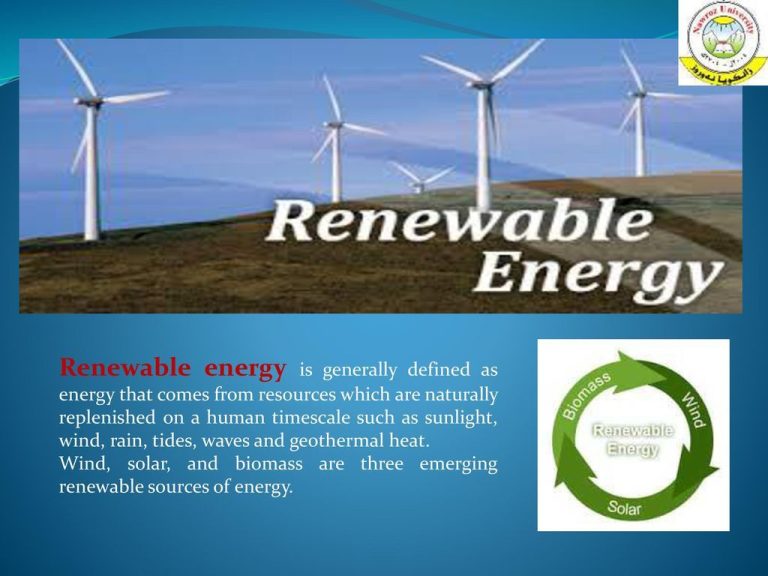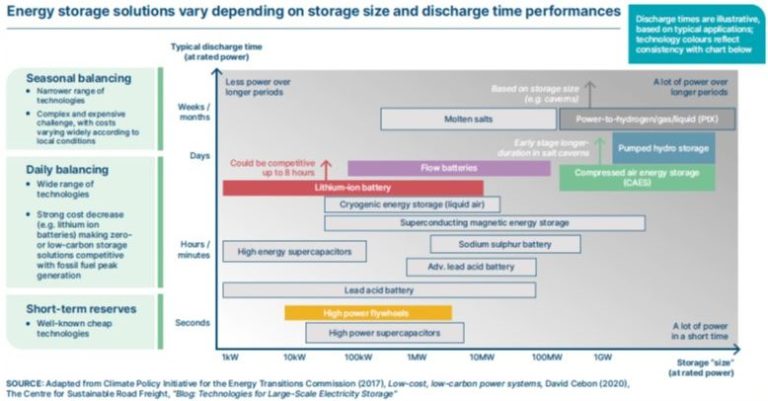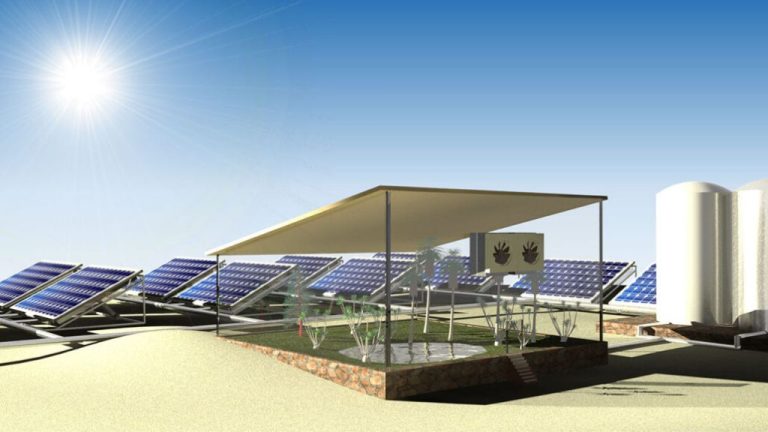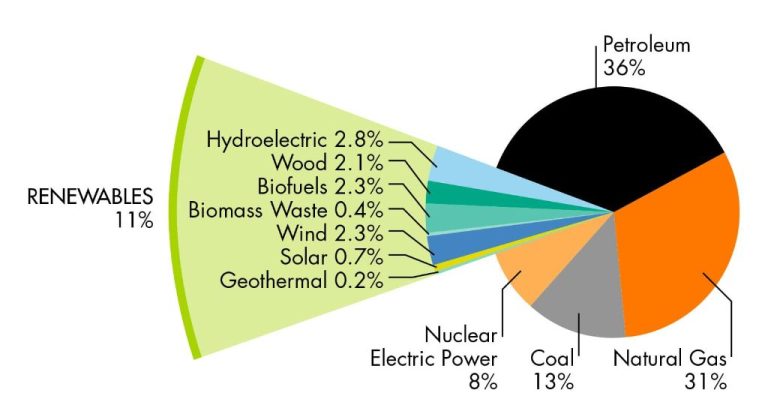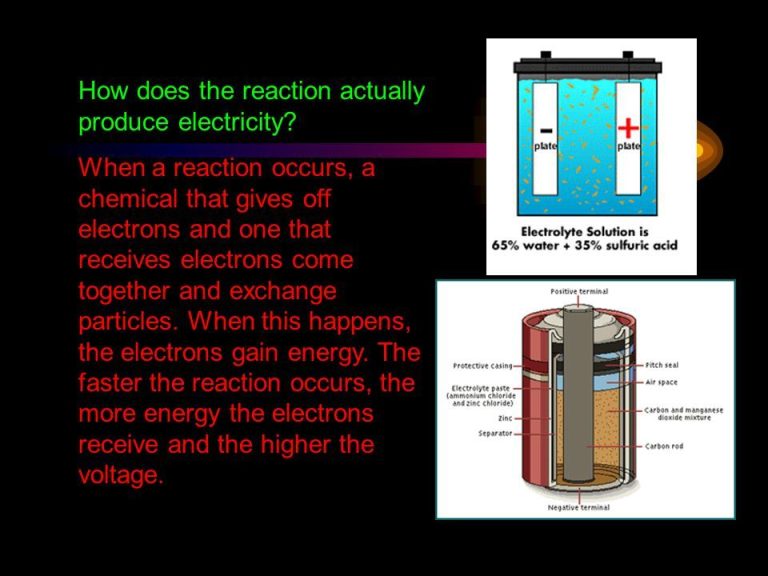How Did Renewables Become So Cheap?
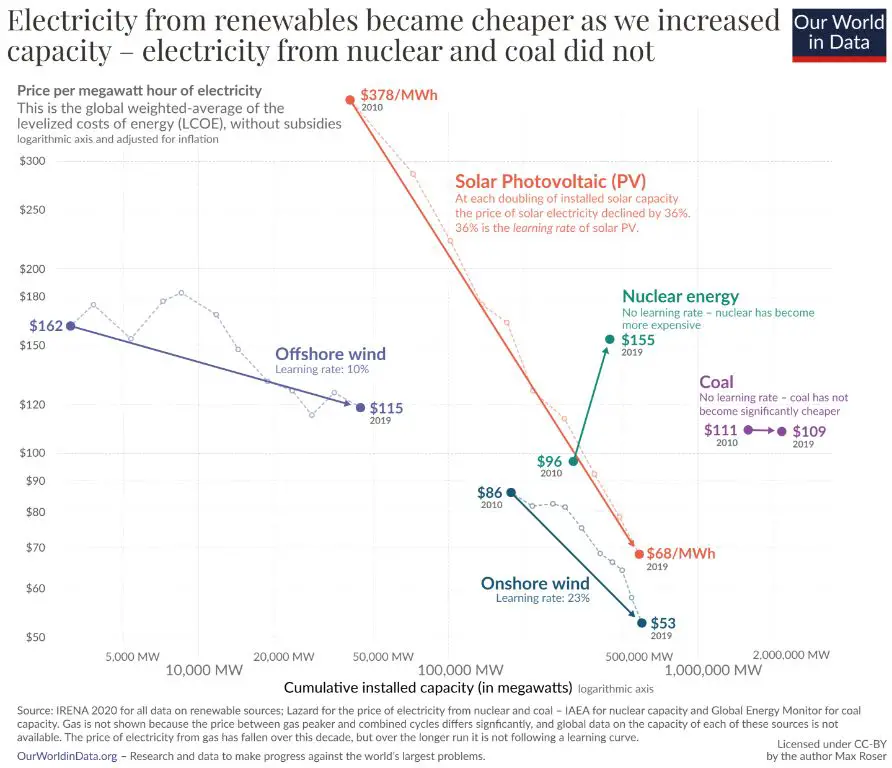
Renewable energy prices have fallen dramatically in the past decade. According to Our World in Data, “In most places power from new renewables is now cheaper than new fossil fuels.” The costs of solar and wind power specifically have seen huge reductions, making them cost competitive with traditional energy sources like coal and natural gas.
What factors drove this stunning transformation for renewable energy economics? In this article, we’ll explore the key drivers behind the plummeting costs of renewables that enabled their rise to become the cheapest forms of energy in many parts of the world.
History of Renewable Costs
In the 1980s and 1990s, renewable energy sources like solar and wind were significantly more expensive than fossil fuel alternatives. According to a report by the International Renewable Energy Agency (IRENA), the global weighted average levelized cost of electricity (LCOE) for solar PV in 2010 was around $0.378 per kWh, compared to just $0.046 for gas and $0.039 for coal (IRENA, 2021). Likewise, onshore wind had an LCOE of $0.085 per kWh in 2010, much higher than fossil fuels. High capital costs and low capacity factors contributed to the high price of renewables historically.
Technological Improvements
Advancements in technology have played a major role in reducing costs for renewables like solar and wind. According to the International Energy Agency (IEA), the average cost of solar PV modules has dropped by over 90% since 2010 due to improvements in materials and manufacturing techniques (IEA). The efficiency of solar panels has increased significantly thanks to new materials like perovskites that absorb light more effectively. Manufacturing innovations like diamond wire cutting have also reduced silicon waste in the production process.
For wind power, larger and lighter turbine blades made from advanced composites like carbon fiber have helped capture more wind energy. Manufacturers are also using 3D printing, robotics and data analytics to optimize turbine designs and construction (World Economic Forum). These improvements in materials and manufacturing techniques have led to more efficient wind turbines at lower costs.
Economies of Scale
As renewable energy technologies like solar and wind expanded, larger factories and installations helped lower costs through economies of scale. Larger factories benefit from bulk purchasing and optimized production, lowering material and logistical costs per unit. Further cost reductions come from producing at an efficient scale. One report found that most of the economies of scale for wind turbines occur when scaling up from one turbine to around ten turbines.
Utility-scale solar and wind farms also benefit from economies of scale. Installing many modules or turbines together lowers installation and infrastructure costs per unit compared to smaller distributed projects. For example, a 1 MW solar farm has an estimated capital cost of $1.8 million, while a 200 MW solar farm costs around $170 million – just $850,000 per MW. Larger solar installations can also negotiate lower pricing from suppliers and spread permitting costs over more units.
Supportive Policies
Government policies have played a major role in driving down renewable energy costs through tax credits, incentives, and other mechanisms. The Energy Policy Act of 1992 and 2005 in the United States helped spur early investments in renewables by introducing production tax credits for wind and solar (1). These tax credits made renewable projects more financially attractive. The U.S. also implemented Renewable Portfolio Standards which required utilities to source a portion of their electricity from renewables (2). Additionally, over half of U.S. states have enacted Renewable Portfolio Standards or voluntary renewable energy goals to encourage the growth of renewables (3). Many other countries implemented similar tax credits, incentives, and mandates to spur renewable energy deployment and cost reductions.
Private Sector Investment
Corporate investments and commitments have played a major role in driving down costs of renewables. Major companies have made large financial pledges towards renewable energy projects and technology. For example, according to the NEW REPORT: Private Sector Investments in U.S. Clean Energy Surge, unprecedented federal investment has spurred announcements of $271 billion in private capital for domestic clean energy manufacturing and infrastructure. Companies like NextEra Energy, Brookfield Renewable Partners, and Ørsted have made multi-billion dollar investments and commitments towards wind and solar projects.
Additionally, according to the International Energy Agency report Executive summary – Scaling Up Private Finance for Clean Energy in Emerging and Developing Economies, both public and private investment need to increase to deliver clean energy at the required scale, but public resources alone will not suffice. In 2022, global private renewable energy investment reached over $250 billion.
The private sector sees renewable energy as a sound long-term investment, and their commitments have enabled further cost reductions through economies of scale and accelerated technological improvements.
Competition
Increased competition between renewable energy companies and sources has been a major driver in reducing costs. As the renewable energy industry has grown, companies have had to compete more aggressively on pricing in order to win market share and customers. This competition applies both within specific renewable sectors like solar or wind, as well as between different renewable technologies.
For example, the U.S. Department of Energy has sponsored competitions like the EERE Prizes and Competitions to spur innovation and cost reductions in renewable energy. Competitions incentivize companies to cut costs and improve efficiency in order to have the most competitive offerings.
There is also increasing competition between renewable sources like solar, wind, hydropower and geothermal. As these technologies have improved and costs have declined, they compete for the same investments and projects. This cross-technology competition drives down costs across the board.
Fall in Fossil Fuel Prices
A major factor contributing to lower renewable energy prices has been falling fossil fuel prices. Fossil fuels like natural gas and coal have historically been the dominant sources of electricity generation. Their costs directly impact electricity prices.
For example, the onset of the COVID-19 pandemic in 2020 led to a dramatic drop in oil and gas prices, with some crude oil futures prices even going negative for a period. According to the IMF, this was driven by “unprecedented collapse in demand and available storage capacity” [1]. While prices rebounded, they have remained relatively low compared to pre-pandemic levels.
With lower input costs from cheaper natural gas, the marginal cost of electricity from gas plants decreased. This put downward pressure on wholesale electricity prices in markets globally. Since renewables like solar and wind have minimal fuel costs, lower electricity prices have made them more competitive with fossil fuel alternatives.
Conclusion
In summary, renewable energy costs have fallen dramatically in recent years due to a combination of technological improvements, economies of scale, supportive government policies, and increased private sector investment and competition. Key innovations like taller wind turbines, tracking systems for solar panels, and larger turbines for hydropower have all helped drive down costs.
Renewable energy is now cost-competitive or even cheaper than fossil fuels in many parts of the world. The costs of solar and wind power are projected to continue falling over the next decade. Further cost reductions will likely require additional R&D and continued policies that support renewable growth and access to financing.
The future outlook for renewables is very positive. With costs projected to keep falling while tackling climate change becomes more urgent, we can expect strong growth in solar, wind, and other renewable energy sources in the years ahead.
Key Takeaways
Renewable energy costs have fallen dramatically due to a combination of factors:
– Technological improvements and innovation have increased efficiency and lowered production costs.
– Economies of scale from larger manufacturing volumes have driven down costs.
– Supportive government policies like tax credits, incentives, and mandates have accelerated adoption.
– Private sector investment in R&D and manufacturing has brought new technologies to market.
– Competition between renewable energy companies has made the industry more efficient.
– The decline in fossil fuel prices has reduced operating costs for renewables.

